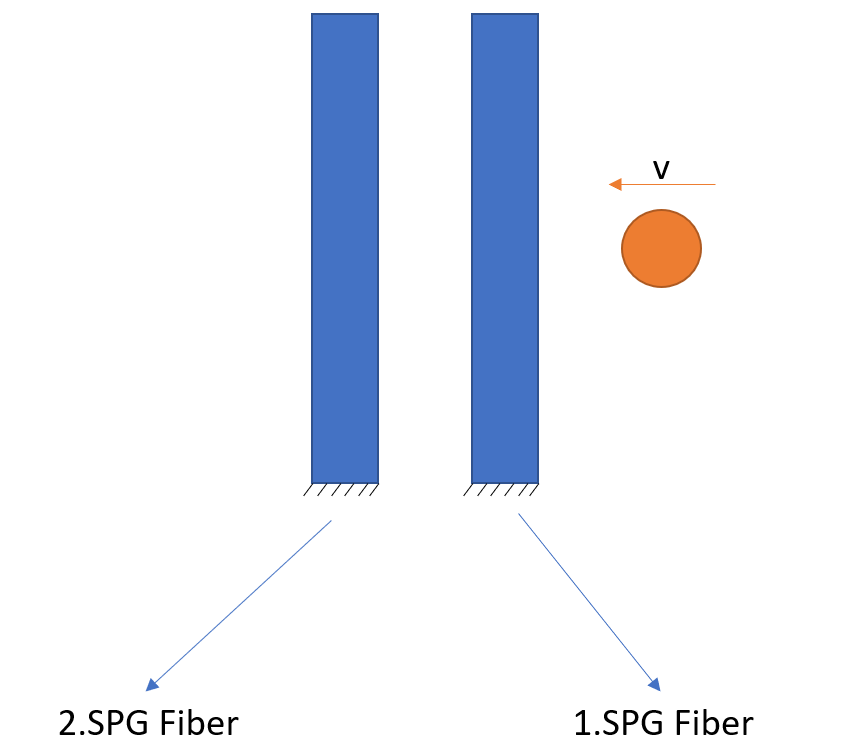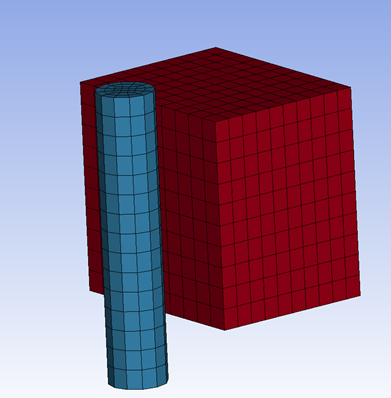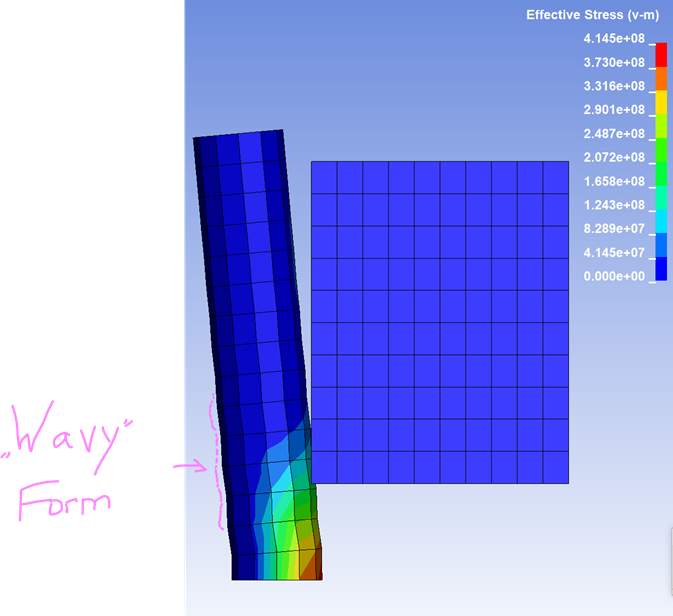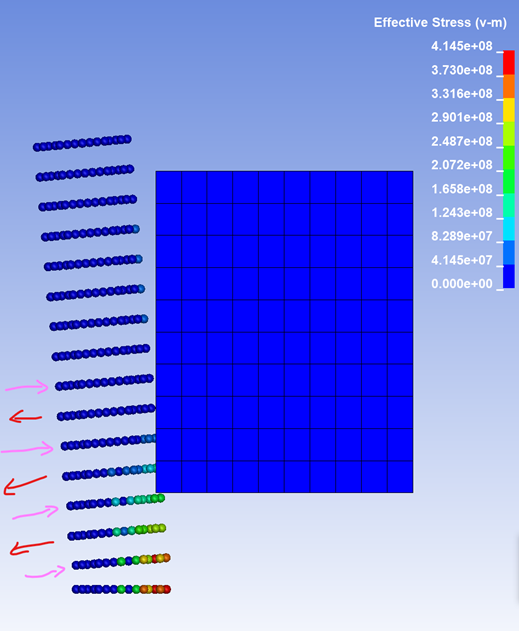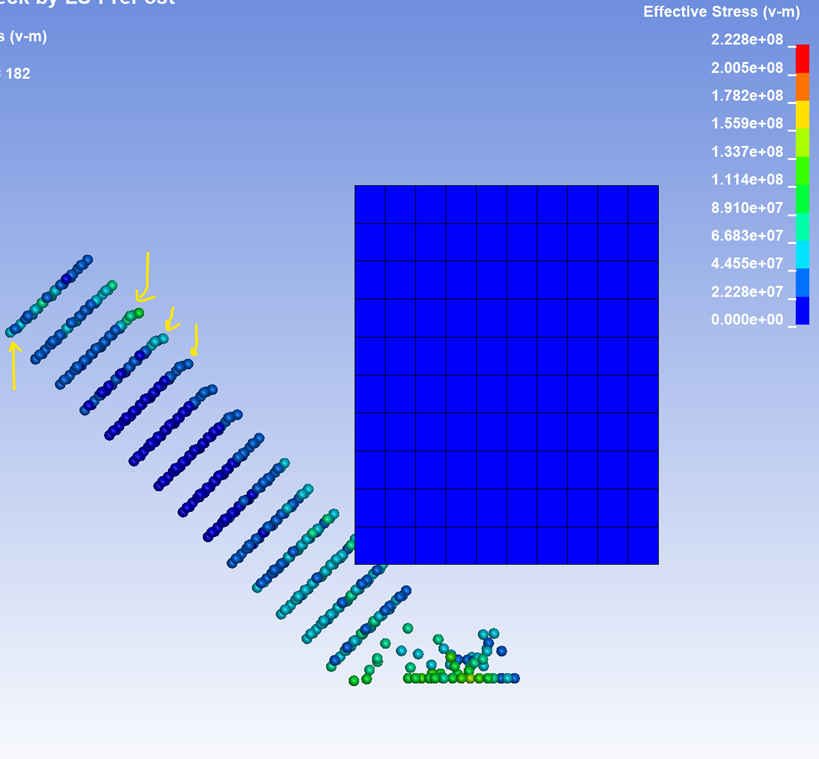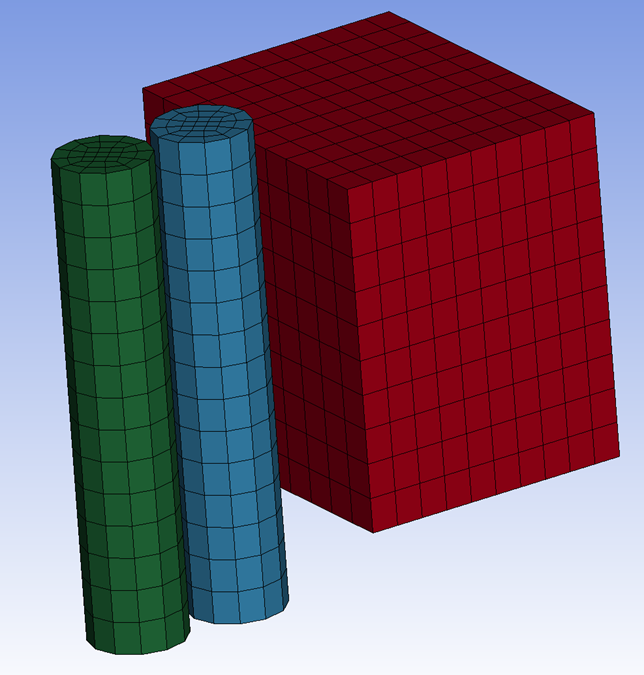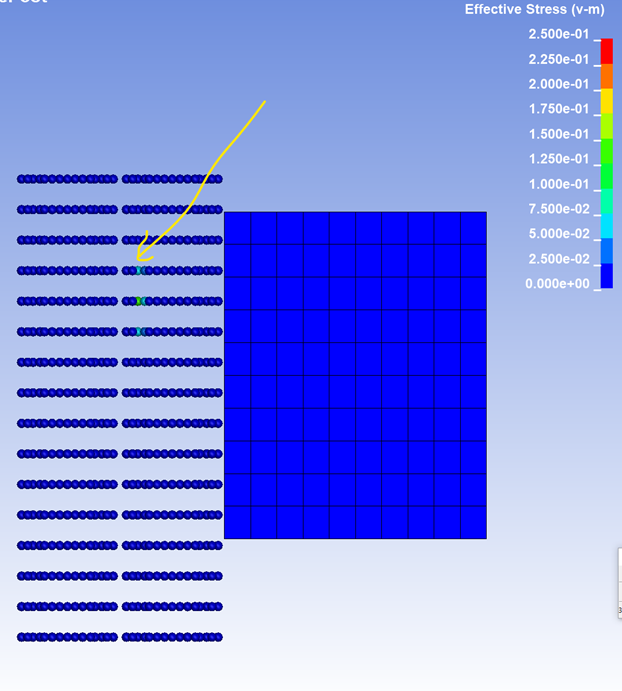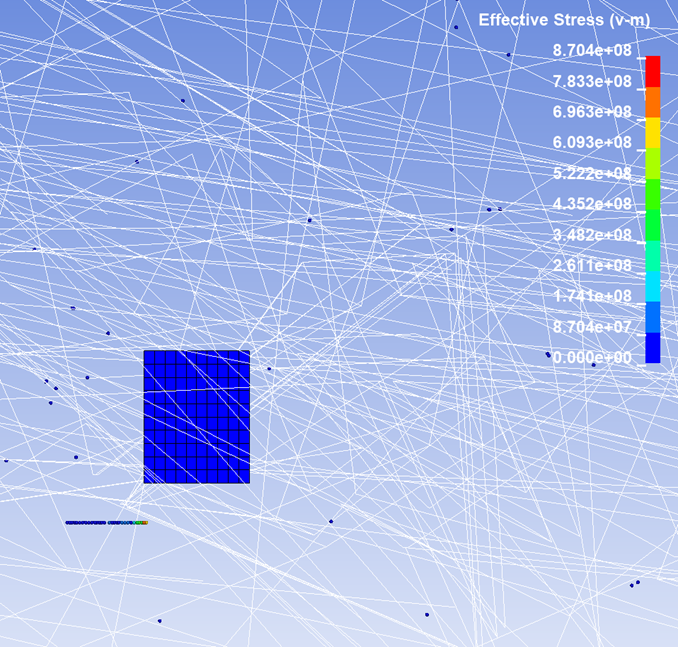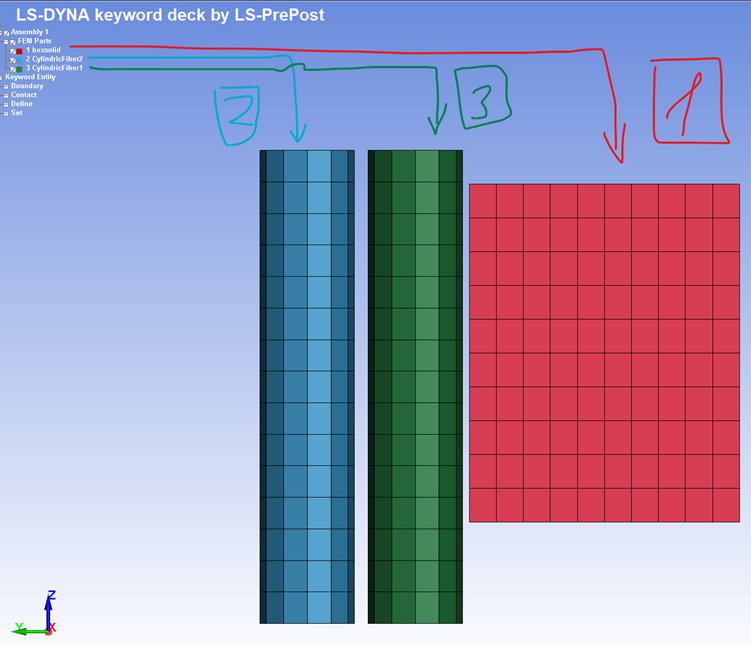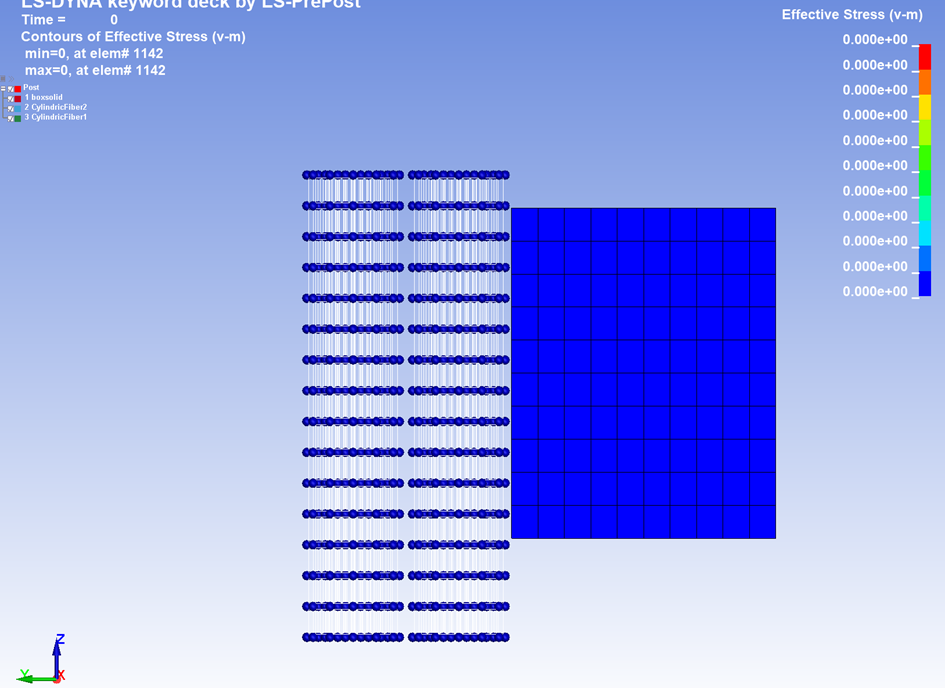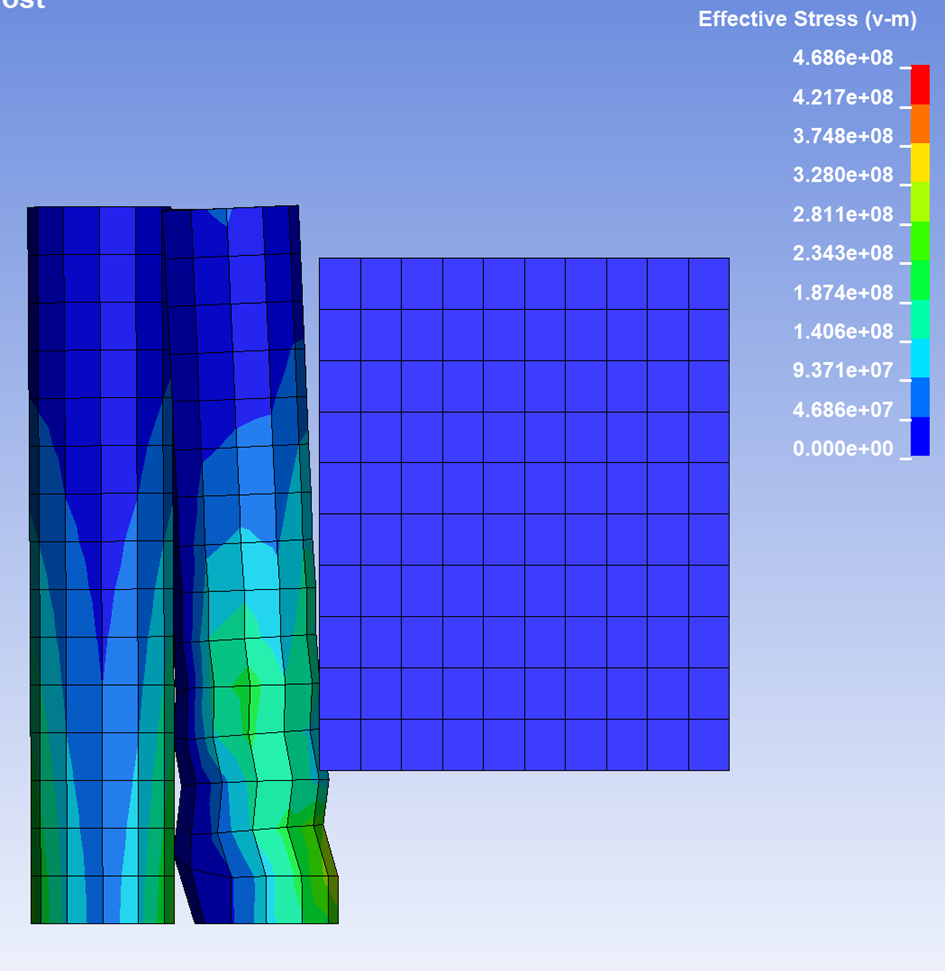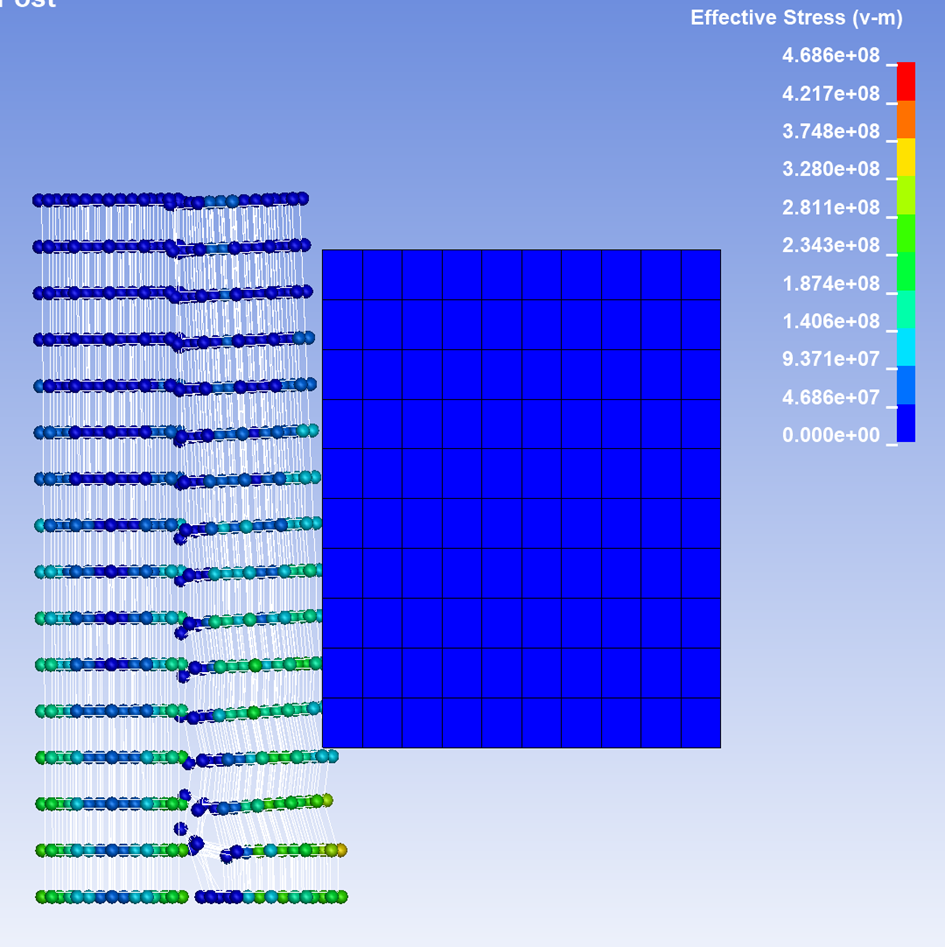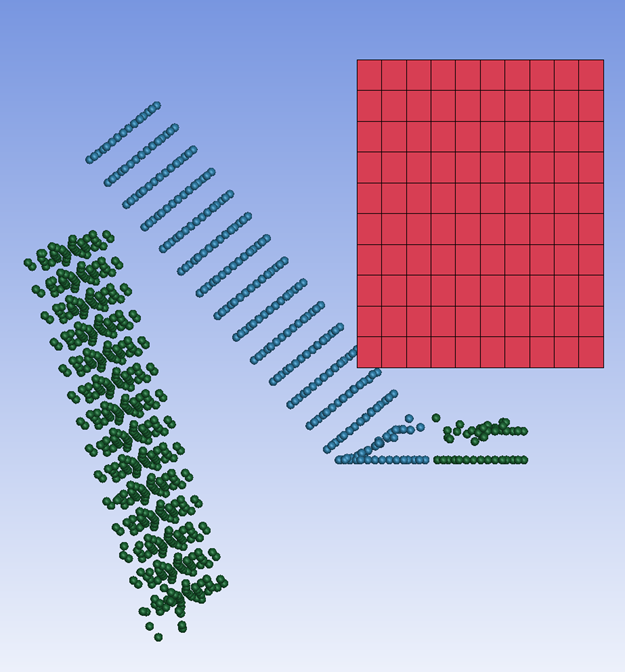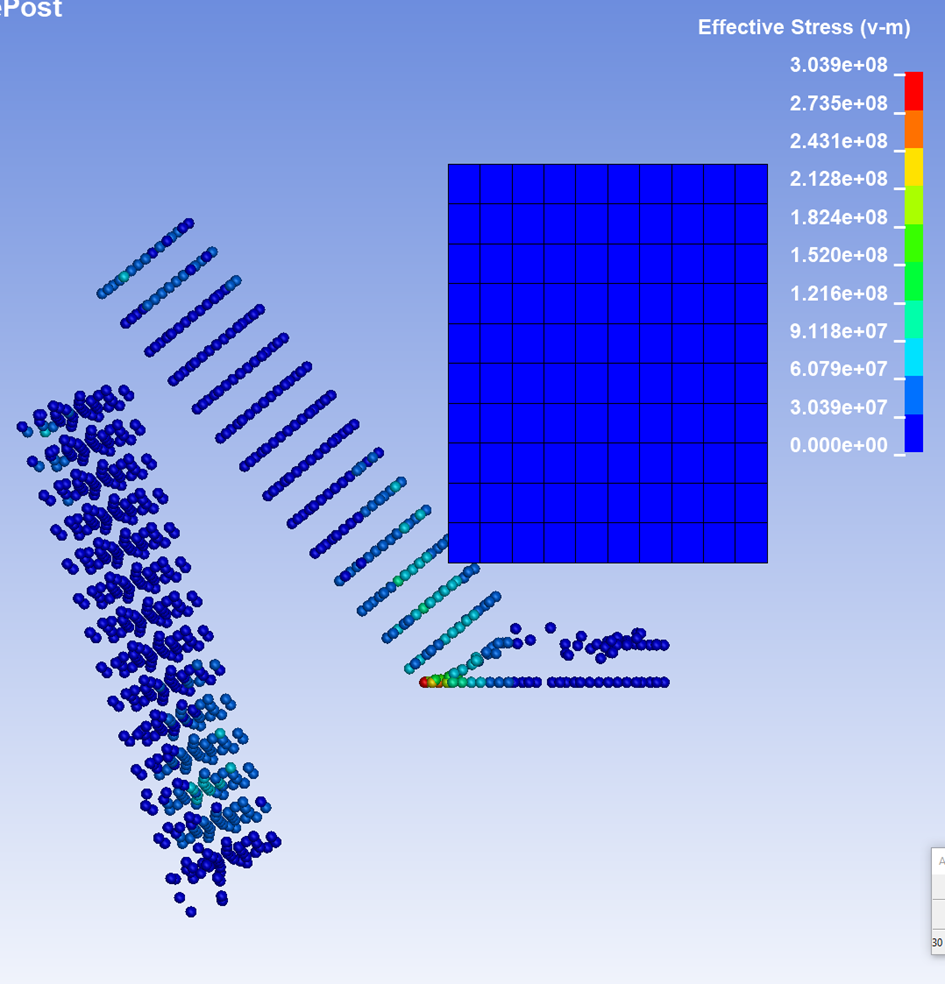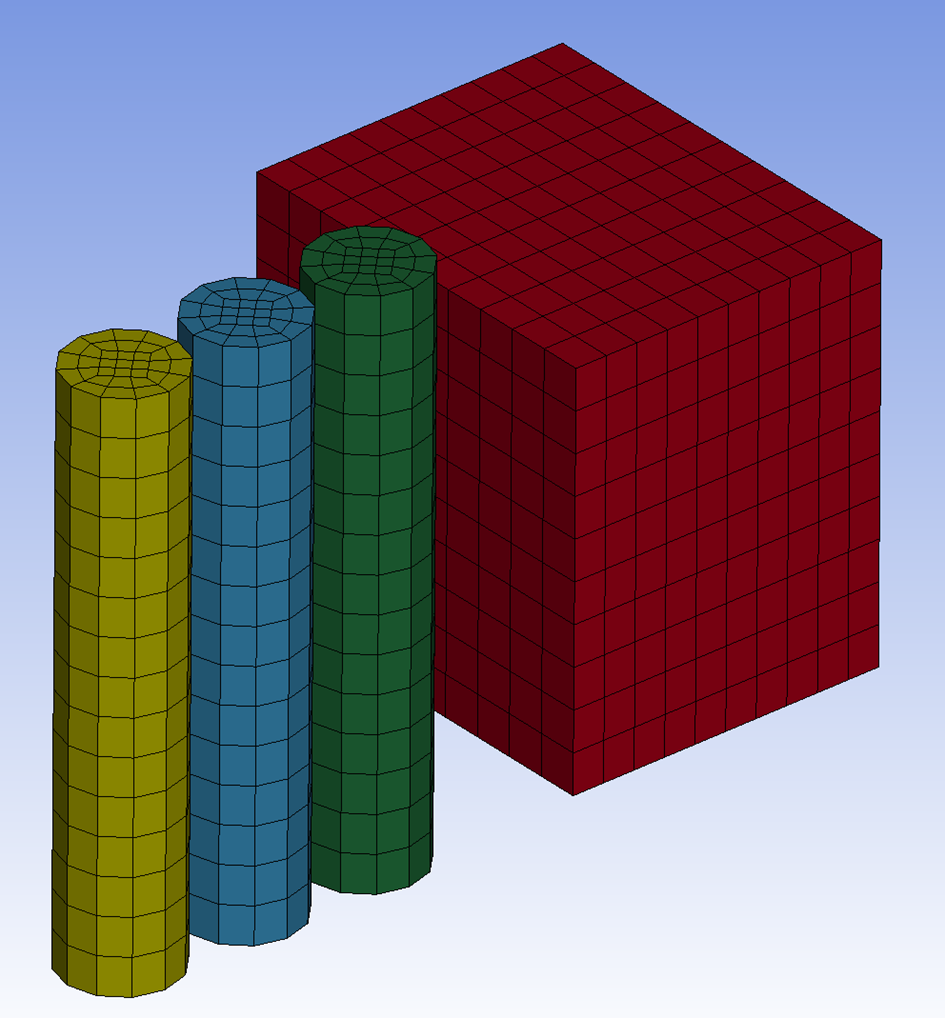-
-
December 19, 2023 at 10:19 am
Fritz Herschteinmueller
SubscriberHello everyone,
I am trying to simulate a failure of carbon fibers in SPG and I have encountered a problem with interaction between SPG elements. I have a rigid body (orange cylinder) that moves with velocity v towards the fibers which are clamped on the bottom and during the destruction of the first fiber (1.SPG element), the first fiber just comes through the second fiber (2.SPG element) and there is no contact. I have discovered the keword CONTACT_SPG, but when I am applying the keyword under some random values, then there is a contact between fibers, but for example no mises stress can be observed altough the second fiber is bending. The bending of the second fiber by the way looks weird with CONTACT_SPG.
Can you please give me some advices of how to adjust CONTACT_SPG or is there any other simple way to create right interaction between two SPG bodies?
Thanks a lot in advance.
Best Regards.
-
January 3, 2024 at 6:25 pm
igandiko
Ansys EmployeeCould you please let us know your LS-DYNA version? Note that, as a relatively new solver, the SPG capability has a lot of improvement in features, accuracy and robustness in newer versions, so please use the latest version or even DEV build.
PEN parameters in the card are contact penalty factors and they are recommended to be Youngs modulus. Please also turn on self contact (ISELF).
You can also try FEM-based single surface contacts for SPG parts as long as there is no new surface created due to material failure.
-
January 5, 2024 at 12:02 pm
Fritz Herschteinmueller
SubscriberHello Imtiaz Gandikota,
thanks for your response. Here is a global information about the simulation:
1) LS-DYNA Version: R13.1.1-17-ga451ec960f
2) Preset: MPP double-precision, with IntelMPI
3) Number of CPUs: 6
4) Expected failure of the fiber: brittle
5) Fibers: MAT_059
The contact between the rigid body and fibers are CONTACT_AUTOMATIC_NODES_TO_SURFACE and between fibers (cylinders) is CONTACT_AUTOMATIC_SINGLE_SURFACE. I tired the CONTACT_SPG card with your recommendation, but it seems not to work for me.
I will mark and numerate my questions in bold, and I would really appreciate it if you could provide answers to them.
When using SMP double, the behavior is pretty much as expected, but when there are more than 1 fiber, then the simulation is being terminated due an error or there is a weird behavior of the fibers (more about it down below). As I understood from the examples from the lstc website https://www.lstc-cmmg.org/ex-twoscale (see the examples with the bolts), when there is an interaction between SPG elements then it is a must to use the MPP double-precision.
1) Is it actually so? Or there are any other possibilities and it is possible to use the SMP double precision preset under some conditions?
I changed the rigid body to a cubic body due to sharp edges to provide higher possibility of failure.
Here are my tests:
1. Test: One Fiber
Geometry Input: (Cubic body- rigid,red. Fiber – bright blue.)
When the first failure occurs, a “wavy” form of deformation can be observed. This wavy form is especially simple to recognize, when the SPG particles are not activated:
When the particles are activated, one layer of the particles simultaneously got forward (marked red), although they shouldn’t, especially the upped layer:
The failure seems to be fine, but the deformation of some particles is not expected as marked in yellow on the image below. Some points “slipped” down and some up.
2)an the “wavy” form be considered as a numerical failure? I’ve checked the material properties many times and the input is at it should be. Could it be a contact problem?
2. Test: Two Fibers
Here are the things are not making any sense for me.
Here is the input geometry:
Under the same conditions, I`ve added one more fiber and already at timestep = 0 it is possible to observe some “parasitic” stress (see yellow arrow):
The first contact of the cube with the first fiber is by the way totally fine, but at some point, the fibers are “exploding” and particles flying all around:
In this case, I get the famous error forrtl: severe (157): Program Exception – access violation.
After a lot of tests, I have discovered the following:
In the case of the “exploding” fibers, each solid body was numbered in the growing order:
Then I changed the IDs of the 2nd the 3rd fiber so that:
And now, there are no “parasitic” stresses at timestep = 0 observed:
The interaction in this case seems to be fine, although the “wavy form” of the fiber is still there (see the first fiber below).
Particles view off:
Particles view on:
The failure in the case of the ID’s changed order seems to be fine. Part view:
Mises stress view:
And then I tried to make the same with three fibers…
3. Test: Three Fibers
Same conditions as before.
Geometry input:
In this case, no matter what I’ve tried, I always got the error forrtl: severe (157): Program Exception – access violation.
3) Why there is an influence of the ID’s numbers on the simulation stability? How it is possible to solve this issue?
4) Any other recommendations to achieve stability?
Thanks in advance for your answers.
Best Regards.
-
January 11, 2024 at 10:42 am
Fritz Herschteinmueller
SubscriberSomeone?
-
January 11, 2024 at 6:56 pm
Ram Gopisetti
Ansys EmployeeHi Fritz,
What is the SPG section card situation ? , what is the IDAM value here ? , have you looked into correct failure criterion of IDAM based on the Material used?
What solver you have been using ?
cheers, ram
-
January 12, 2024 at 10:31 am
Fritz Herschteinmueller
SubscriberHi Ram,
I am using KERNEL = 2 with ISPLINE = 2, as well as IDAM = 11, since composites are brittle. I also use ITB = 3, as recommended on the website lstc-cmmg.org.
The solver is R13.1.1-17-ga451ec960f, as stated above.
Could the contact problem be dependent on the SPG section?
I would appreciate any help.
Best Regards.
-
-
January 17, 2024 at 12:27 pm
Fritz Herschteinmueller
SubscriberUP. Someone has an idea? I would really appreciate it.
-
- The topic ‘Interaction between solid elements in SPG’ is closed to new replies.



-
4612
-
1515
-
1386
-
1209
-
1021

© 2025 Copyright ANSYS, Inc. All rights reserved.

